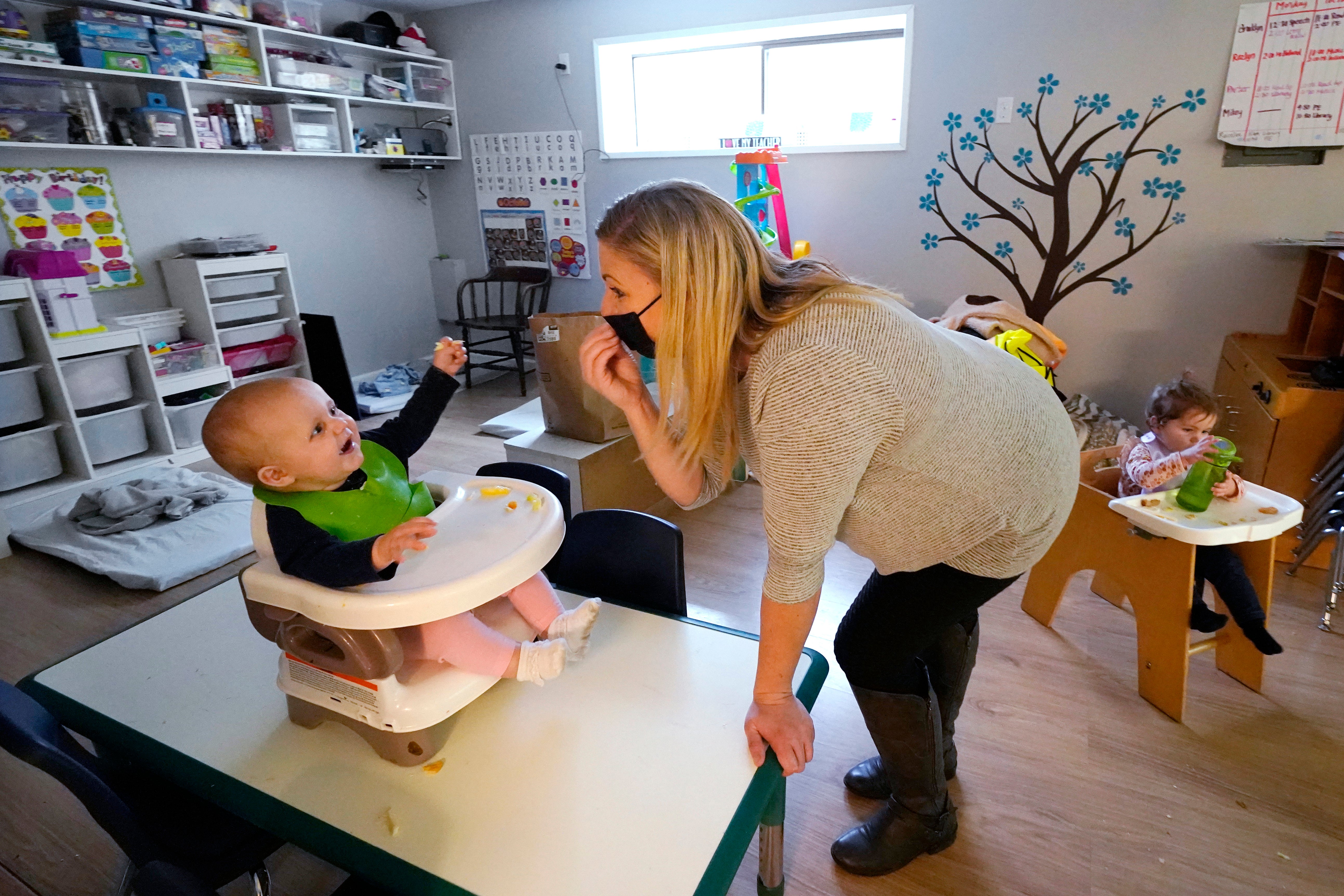US births rose last year but still less than before pandemic
U.S. births bumped up last year, but the number of babies born was still lower than before the coronavirus pandemic

Your support helps us to tell the story
From reproductive rights to climate change to Big Tech, The Independent is on the ground when the story is developing. Whether it's investigating the financials of Elon Musk's pro-Trump PAC or producing our latest documentary, 'The A Word', which shines a light on the American women fighting for reproductive rights, we know how important it is to parse out the facts from the messaging.
At such a critical moment in US history, we need reporters on the ground. Your donation allows us to keep sending journalists to speak to both sides of the story.
The Independent is trusted by Americans across the entire political spectrum. And unlike many other quality news outlets, we choose not to lock Americans out of our reporting and analysis with paywalls. We believe quality journalism should be available to everyone, paid for by those who can afford it.
Your support makes all the difference.U.S. births bumped up last year, but the number of babies born was still lower than before the coronavirus pandemic.
The small 1% increase was a bit of a rebound from 2020, the first year of the pandemic, which witnessed the largest one-year drop in the U.S. births in nearly 50 years.
But there were still about 86,000 fewer births last year than in 2019, according to a government report released Tuesday.
“We’re still not returning to pre-pandemic levels,” said Dr. Denise Jamieson, chair of gynecology and obstetrics at Emory University School of Medicine.
U.S. births had been declining for more than a decade before COVID-19 hit, and “I would expect that we would continue to see small, modest decreases,” she said.
Officials think last year's uptick reflects births from pregnancies that had been put off during the uncertain early days of the pandemic. Deliveries were way down in January 2021, but improved as the year went on, said Brady Hamilton of the U.S. Centers for Disease Control and Prevention. Much of the increase was seen in older moms.
"These are births that were postponed,” said Hamilton, lead author of the new report.
The report is based on a review of nearly all birth certificates issued last year.
Some of the key findings:
— Nearly 3.7 million births were reported last year, up from the roughly 3.6 million recorded in 2020.
— Birth rates dropped again for teens and for women younger than 25, but rose 3% for women in their early 30s, 5% for women in their late 30s, and 3% for women in their early 40s.
— Birth rates rose 1% for Hispanic women and 3% for white women. But they fell 1% for Asian women, 3% for Black women, and 4% Native American and Alaska Native women. That may reflect the pandemic's harsher impact on the health and lives of some racial groups, experts said.
—The U.S. was once among only a few developed countries with a fertility rate that ensured each generation had enough children to replace itself — about 2.1 kids per woman. But it’s been sliding, and in 2020 dropped to about 1.6, the lowest rate on record. It rose slightly last year, to nearly 1.7.
—The percentage of infants born small and premature — at less than 37 weeks — rose 4%, to about 10.5%. It was the highest it’s been since 2007.
The premature birth rate had declined slightly in 2020, and health officials aren't sure why the increase occurred. But older moms are more likely to have preterm births, as are women infected with COVID-19, said the CDC's Joyce Martin, a study co-author.
___
The Associated Press Health and Science Department receives support from the Howard Hughes Medical Institute’s Department of Science Education. The AP is solely responsible for all content.